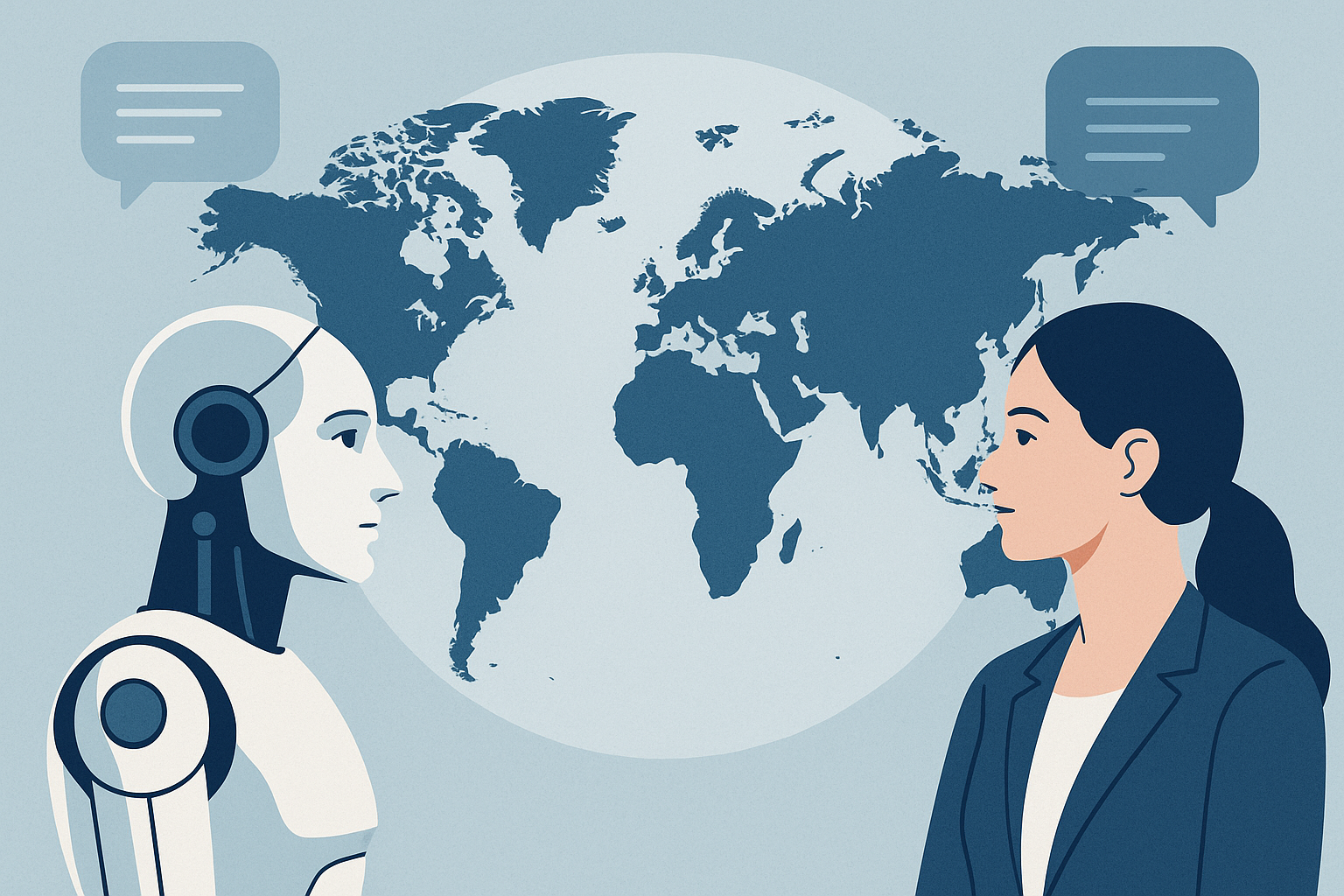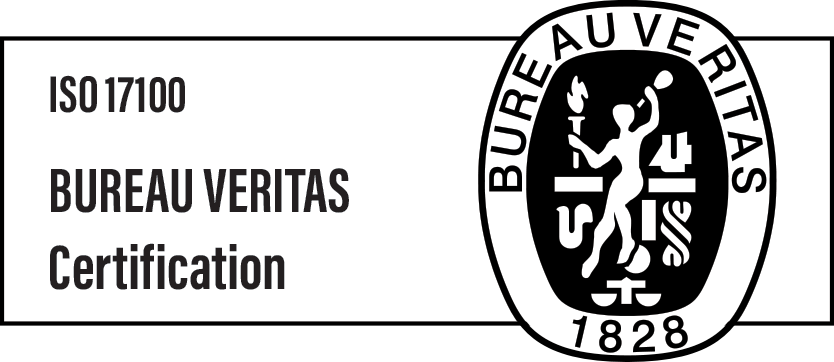How AI is reshaping the translation industry in 2025

A new era in translation
In 2025, the translation industry stands at the crossroads of innovation and necessity. As globalization accelerates and digital communication becomes more instantaneous, the need to deliver multilingual content with both speed and precision has never been greater. What was once a linear, manual process has transformed into a dynamic, AI-augmented ecosystem, where algorithms and linguists work hand in hand to bridge languages in real time. Artificial Intelligence is no longer just a supportive tool in the translator’s toolkit; it’s becoming the engine that powers seamless cross-border communication, driving faster workflows, broader reach and smarter language solutions across every sector. This new landscape isn’t just reshaping how we translate – it’s redefining what’s possible.
The acceleration of machine learning in linguistics
In 2025, machine learning is no longer just enhancing translation, it’s reinventing it. Powered by increasingly sophisticated algorithms and deep learning models, today’s language AI can go far beyond word-for-word translation to interpret context, intent, tone and even domain-specific vocabulary. Neural Machine Translation (NMT) systems now adapt in real time, learning from past corrections, user behavior and dynamic datasets to produce more fluent and culturally accurate outputs with every iteration.
What makes this evolution truly groundbreaking is the ability of ML systems to specialize by industry – whether legal, medical, technical or marketing – by training on domain-specific corpora. This specialization allows AI to understand not just grammar and syntax, but the unique communicative nuances of each field. Combined with adaptive translation memory and intelligent glossaries, these systems deliver unmatched consistency across projects, languages and markets. As a result, machine learning is no longer just a backend tool – it’s becoming the linguistic engine of the global economy.

The acceleration of machine learning in linguistics
Real-time localization for global-first brands
In a hyperconnected digital landscape, speed is an expectation. Global-first brands must localize content not just quickly, but instantly, across platforms, regions and languages. Thanks to advancements in AI-powered localization, this is now a reality. Real-time localization tools use a blend of machine translation, dynamic content adaptation and user context to deliver personalized, linguistically accurate experiences, whether on a website, mobile app, video stream or e-commerce interface.
From auto-generating localized product descriptions to serving region-specific ad copy in milliseconds, AI enables brands to maintain message consistency while adapting tone and content to local audiences. For industries like gaming, e-learning, SaaS and global retail, real-time localization is transforming how user experiences are built and scaled. It’s not just about translating words, it’s about delivering relevance at the exact moment of interaction, anywhere in the world. And as AI continues to integrate with design systems, content management platforms and customer data, localization will become even more predictive, seamless and invisible – yet powerfully impactful.

Real-time localization for global-first brands
Voice tech & speech recognition: from subtitles to simultaneous interpretation
Voice technologies are redefining how we experience language in 2025, moving far beyond basic transcription into real-time, interactive multilingual communication. At the heart of this shift is the convergence of Automatic Speech Recognition (ASR), Text-to-Speech (TTS) and Neural Machine Translation (NMT) – a trio that enables everything from AI-powered subtitling to live speech translation. What once required a team of linguists and technicians can now be done instantly, with surprising fluency, by a voice-enabled AI system.
This has massive implications for industries like media, education, customer support and conferencing. Live-streamed events can now include automated, accurate subtitles in multiple languages, while call centers deploy real-time speech recognition to offer multilingual assistance without human translators on standby. Even voiceovers for training videos and product demos can be localized using synthetic voices with regional accents and emotional intonation, offering a near-human listening experience.
As voice AI becomes more accessible and linguistically diverse – supporting even low-resource languages and dialects – it’s closing the gap between spoken and written translation. In doing so, it’s making spoken content globally shareable, inclusive and instant, expanding the reach of communication like never before.

Voice tech & speech recognition: from subtitles to simultaneous interpretation
The human touch: where AI still needs us
Despite remarkable advances in automation, AI is not a silver bullet – and in translation, the human element remains irreplaceable. While machines excel at speed, scale and literal accuracy, they continue to struggle with nuance, tone and cultural context. Idioms, humor, brand voice and emotional subtext often fall outside the grasp of even the most advanced neural networks. This is especially critical in sectors like marketing, legal, healthcare and literature, where a mistranslation can lead not only to confusion, but to reputational or regulatory risks.
This is where human linguists come in, not just as editors, but as strategic interpreters of meaning. They refine machine output, ensure cultural appropriateness, adapt phrasing for audience resonance and make judgment calls that no algorithm can replicate. In a multilingual world shaped by fast-moving trends and cultural shifts, the human translator ensures that content doesn’t just translate, it connects.
The most effective approach today is a hybrid model, where AI handles the heavy lifting of pre-translation, and skilled professionals take it across the finish line. This collaboration brings out the best in both worlds: the efficiency of technology and the empathy of human understanding.

The human touch: where AI still needs us
Business benefits: efficiency, consistency and cost control
The integration of AI into translation workflows is not just a technological upgrade, it’s a strategic advantage. For businesses operating across borders, AI delivers tangible benefits that go far beyond faster turnarounds. Efficiency is dramatically increased, with automation handling large volumes of content in multiple languages simultaneously, reducing the time from concept to publication. This means brands can launch global campaigns, product updates or support materials in real tim, without delay or bottlenecks.
AI also brings a new level of consistency to multilingual communication. With centralized translation memories, adaptive glossaries and standardized tone guides, companies can maintain brand voice and terminology across regions and platforms – even as content scales. This is especially crucial for regulated industries or customer-facing sectors where misalignment can erode trust.
Finally, the financial impact is significant. By automating routine tasks and streamlining workflows, organizations can optimize translation budgets, allocate human talent more effectively and reduce overhead associated with manual localization. Whether it’s through intelligent content reuse or selective post-editing, AI enables smarter cost control without compromising on quality. In short, businesses not only translate more – but do so faster, better and more affordably.

Business benefits: efficiency, consistency and cost control
The future is multilingual, intelligent and human-led
As we look ahead, one thing is certain: the future of translation is being shaped by a powerful blend of AI and human creativity. AI will continue to evolve, becoming faster, more intuitive and increasingly integrated into every stage of the content lifecycle. But the true potential of this evolution will be unlocked only when paired with the irreplaceable strengths of human linguists: empathy, judgment and cultural fluency.
In 2025 and beyond, forward-thinking organizations won’t be asking whether to choose between humans or machines. Instead, they’ll be investing in systems that bring them together: platforms and processes that merge computational power with human insight to produce translations that are not only accurate, but also authentic and impactful.
The future of language isn’t just automated. It’s adaptive, inclusive and deeply collaborative. It speaks to global audiences with clarity and respect. And at its core, it remains human-led.

